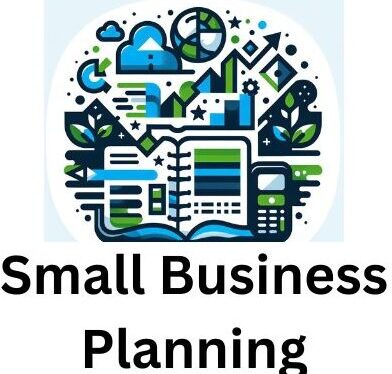
I’m going to start off by explaining why mastering sales forecasting is so crucial for small businesses. You’re going to find out about not only how to predict your future sales but also why this is a foundational skill for your business’s financial health and planning.
This isn’t just about crunching numbers; it’s also about establishing a clear vision for the future of your business. By accurately estimating future sales, you’re able to make informed decisions on budgeting, resource allocation, and strategic development – it’s the backbone of your financial planning.
In my opinion, the key to successful forecasting lies in being transparent with your data and relevant with your market expectations. Keeping those principles at the forefront ensures that your sales forecasts will serve as a reliable touchstone for guiding business decisions.
Now, understanding your market and customers is the next logical step. A thorough market analysis directly supports your sales forecasting efforts. In the following section, you’re going to delve into how understanding the needs and behaviors of your customers, along with detailed knowledge of your market’s landscape, ultimately sharpens the accuracy of your forecasts.
Understanding Your Market and Customers
You’re going to find out about the cornerstone of any successful sales forecast: your market and customers. It’s not just about figures and financial statements; it’s about grasping the dynamics of your clientele and the environment in which you do business.
I’m going to walk you through how a thorough market analysis can significantly improve the accuracy of your forecasts. By dissecting your market, you’ll spot trends, understand the economic climate, and anticipate demand more effectively.
Next up, identifying your target audience is crucial. Do you know who is most likely to purchase your product or service? Understanding your customers’ purchasing habits, preferences, and behaviors will provide the foundation for your sales projections.
Don’t worry too much about the complexities of data collection just yet. Customer feedback, together with historical sales data, can be potent tools. These nuggets of information are invaluable for pattern recognition and predicting future trends.
Moreover, keeping an eye on your competitors is critical. I’ll show you how to conduct a competitive analysis to assess how your business stacks up and to get a grip on potential market share. This step will help you fine-tune your sales forecasts with practical insights.
Forecasting Models and Methods
When you’re wanting to forecast your sales and revenue, it’s crucial to use the right tools. You’ve got a choice between qualitative and quantitative models, and I’m going to help you understand the difference. Qualitative forecasting relies on expert opinions and market insights. This is good when you don’t have a lot of historical data to go on.
Now, quantitative forecasting is the number cruncher. Time series analysis is a common choice here, where you basically look at past sales data to predict future trends. This can be useful if you have consistent patterns over time. There’s also regression analysis, which helps you understand how various factors affect your sales. There is also software products available that can provide assistance.
I really hope that you don’t shy away from using technology to streamline this process. There are some great sales forecasting tools and software that can make life a lot easier. They come packed with features to analyze data and provide projections. Yup, that’s going to include everything from simple spreadsheets to complex predictive analytics platforms.
Here’s a key takeaway: Your forecasting models need to stay flexible. The market is always changing, and you should be ready to adjust. In the next section, we’ll talk about how to put those forecasts into action and why it’s important to keep refining your approach. Remember, this isn’t just about projecting numbers; it’s also about making smart business decisions.
Putting Forecasts into Action: Strategies and Best Practices
When all is said and done, your sales forecast is more than just numbers on a spreadsheet, it’s a roadmap for your small business’s future. Now that you have your forecasts, you’re going to find out about the critical steps that transform these predictions into tangible results. It’s here where the hard work pays off and where strategy meets action.
Creating actionable plans from your forecasts involves setting specific, measurable goals. Determine what steps you need to take to hit your sales targets, whether that means ramping up marketing efforts, adjusting pricing strategies, or exploring new market segments.
Don’t worry too much about your forecast being ‘perfect.’ The business landscape is ever-changing, and so should your forecasts. Make it a regular part of your business routine to review and revise your projections. With each look, you’ll have new insights and can adjust your approach accordingly.
In my opinion, the heart of best practices in forecasting is a triumvirate of accuracy, consistency, and accountability. Make sure your data is as accurate as possible, keep a consistent schedule for your forecasting activities, and hold yourself accountable for the results. Use the benchmarks from your forecasts to gauge business performance and make informed, strategic decisions. As your business progresses the forecast can be and should be fine tuned. This is a standard practice. The starting point is an initial annual forecast. Revisions typically are made quarterly.
To wrap up, let’s consider a case study. Imagine a small boutique that accurately predicted a rise in demand for sustainable fashion. Based on their forecasts, they sourced eco-friendly materials, aligned their marketing to highlight sustainability, and planned their inventory accordingly. Their proactive approach capitalized on the forecasted trend, leading to increased sales and customer loyalty.
Your first attempt at forecasting doesn’t need to be your last. In fact, it shouldn’t be. Choose a method that resonates with you, but be prepared to adapt. The landscape of small business is dynamic, and your ability to navigate this terrain with a reliable compass, your sales forecast, is paramount to your success.
